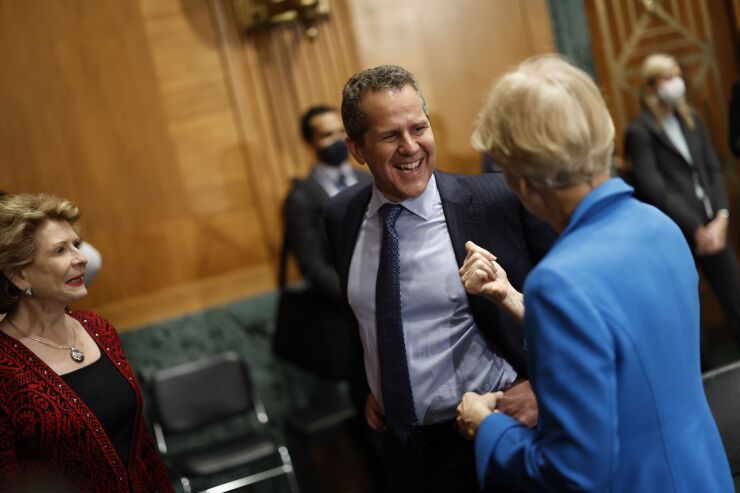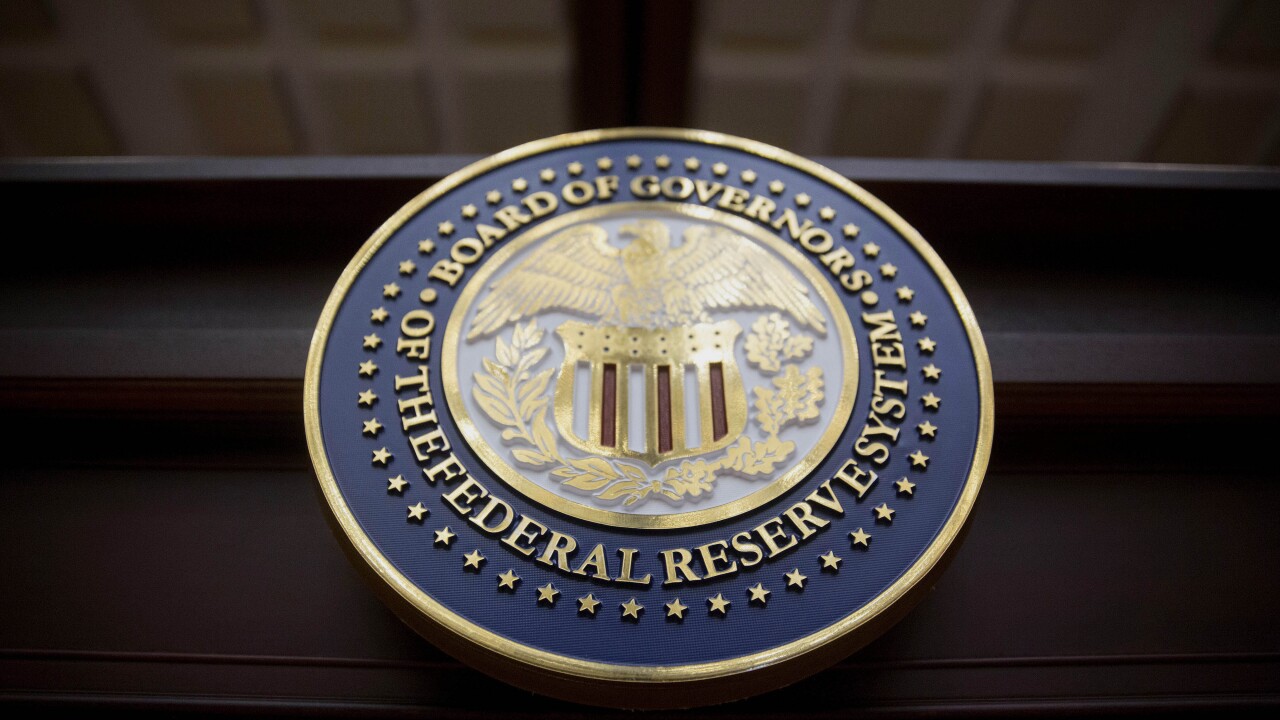
In his final week on the job, the Federal Reserve's top regulator said supervisors need real-time information about the movement of bank deposits.
Michael Barr, the Fed's
Barr, speaking on stage at a Tuesday afternoon event for the Yale University School of Management, said supervisors not only need real-time data about the flow of funds, but also the appropriate historical context for comparison's sake.
"It doesn't really help to know about deposit flows unless you know in relation to what. Banks have deposit flows all day, every day. Money comes in, money goes out. There are patterns to it over the course of the day … so you have to know the historical pattern of the institution every minute of every day and compare the deposit flow to that historical information to have a meaningful sense of 'Is there an unusual pattern of payments activity happening today?'" Barr said. "This is an answerable, knowable thing, but it's something that we need to do more work on."

Barr's comments came during a discussion of crisis management with Yale professor Andrew Metrick, who directs the university's financial stability program. Barr also outlined various other
Barr's recommendations were mostly geared toward responding to the failure of Silicon Valley Bank nearly two years ago.
Specifically, Barr said he favors requiring banks to pledge assets equal to a certain share of their uninsured deposits — 40% for large banks, 25% for small ones — at the Fed's discount window. Such a requirement, he said, would effectively "lock in" the elevated level of pledging seen between March 2023 and March 2024, during which banks increased their pledges by $1 trillion.
He also said the Fed should update its technical treatment of deposits from venture capital firms, which were a driving force in the run that tanked Silicon Valley Bank.
"In these technical rules, venture capital funds are treated the same as corporations in terms of their deposit outflows, and one of the things we saw — which is, I think, common sense — is that venture capital funds do not behave like other corporations," he said. "They behave more like financial entities in terms of the speed of their withdrawal.
The final change Barr said is needed is around the treatment of assets designated on banks' balance sheets as being held to maturity. He noted that it is difficult to bring those assets to market in an emergency scenario without disrupting agreements with counterparties.
Barr has
Now, Barr's liquidity initiatives are unlikely to be elevated beyond mere talking points. He is set to
During Tuesday's event, Barr also highlighted several issues that he believes raise ongoing financial stability concerns: private equity investment in the life insurance industry, securities financing transactions involving Treasuries and unrealized losses on bank balance sheets.
He noted that as private equity groups are increasingly buying insurance providers, many of them are relying on short-term funding markets, creating a maturity mismatch. He is also concerned about highly leveraged hedge funds taking short positions in Treasuries trades — arrangements that could cause a widespread "dash for cash" should these groups have to pay down margin calls. And on the balance sheet topic, he said many banks are still reeling from paper losses due to higher interest rates and disruption to commercial real estate values.
These developments are not currently putting stress on the financial system, Barr said, but he is watching them out of occupational — and personal — diligence.
"When you're in this kind of position, if you're not worried, you're not doing your job," he said.





